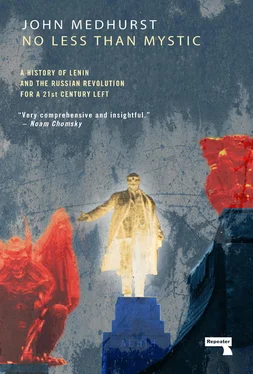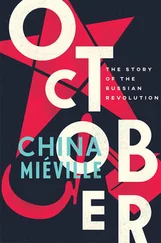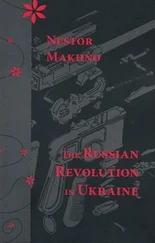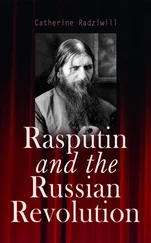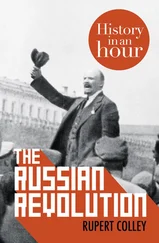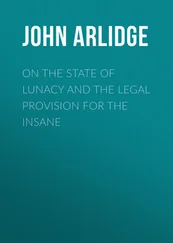The fate of the Mensheviks provides an example and a warning to reformist socialist parties who enter into coalition governments. The experience of the German and Irish green parties, both of whom have been junior partners in coalition governments in the last two decades, is instructive. The German Green Party ( Die Grünen ), influenced by 1960s radicals like Petra Kelly and Joschka Fischer, stood by its “Four Pillars”: Social Justice, Ecology, Non-Violence and Grassroots Democracy. In 1982, in response to the party’s move to the left and its support for LGBT rights, legalisation of drugs and direct action protest, more conservative ecologists left the party. In 1990, the Greens merged with the Alliance 90 ( Biindnis 90 ) party of heterogeneous civil-rights activists, as a result of which they reached 8% of the vote and secured 49 seats. In 1998 they entered a “Red-Green” coalition government with the German SDP, with Fischer as Vice-Chancellor and Foreign Minister.
The results were mixed. On the one hand they were required to support German involvement in the NATO intervention in Kosovo in 1999 and support the invasion of Afghanistan in 2002, leading to some members resigning. On the other, they used their leverage with the SDP to achieve the phasing out and eventual termination of the country’s nuclear power plants and cessation of civil nuclear power by 2020. Partly as a result of this, their positive environmental and social policies, and the tolerant manner in which they had dealt with internal dissent to their support of the coalition, the Greens secured 55 seats in the 2002 elections and again entered a Green-SDP coalition, the overall record of which (including opposition to the invasion of Iraq) was sufficiently positive that the Green vote in the following European elections significantly increased.
By contrast, the record of the Irish Green Party ( Comhaontas Glas ) in government was disastrous. After the General Election of 2007 the Greens formed a coalition government with the centre-right Fianna Fáil, despite securing almost none of the pre-conditions they established to do so. Unlike the German party, the Irish Greens compromised on virtually every key principle they had professed before 2007: opposition to a natural gas pipeline through Kilcommon in County Mayo, rerouting the M3 motorway away from the historic town of Tara, and refusal to be complicit in the CIA’s use of Shannon Airport for rendition flights. The ultimate symbol of their capitulation was Green Energy Minister Eamon Ryan’s approval of Shell UK’s Corib Gas Project to extract offshore natural gas. When the 2008 financial crash hit Ireland (whose economy rested on a bubble of credit and property speculation) the Greens mounted no defence of Irish public services or Irish workers. In the 2011 elections they reaped the whirlwind. Their vote collapsed to less than 2% and they lost all their seats in the national assembly. The Irish Green Party is now electorally irrelevant, its role as a radical voice to the left of Fine Gael taken by a resurgent, increasingly anti-capitalist Sinn Féin.
The fate of the Irish Greens is a more bathetic version of that which befell the Russian Mensheviks in 1917. They had been proactive in setting up the Petrograd Soviet but after entering the Government they faltered. Their social base, unlike the Bolsheviks’, was not attuned to the revolutionary milieu . In E.H. Carr’s analysis “the Mensheviks found their adherents amongst the most highly skilled and organised workers, the printers, the railwaymen and the steelworkers in the modern industrial centres of the south”, whereas the Bolsheviks’ more simplistic political message appealed to “the relatively unskilled labour of the mass industries–the old fashioned heavy industry of the Petersburg region and the textile factories of Petersburg and Moscow”. 20Bolshevik workers were of more recent peasant origin than were Mensheviks, who tended to be secondor third-generation working class and wedded to trade union discipline. Consciously or not, Mensheviks tended to accept the Provisional Government and underestimate the immense challenges it faced.
One of those challenges was the status of the territories within the Russian Empire. After February, was it still an Empire at all? In March, the newly formed Rada (Central Council) of Ukraine in Kiev issued a statement of support for the Provisional Government which also called for the immediate convocation of a Constituent Assembly. It made clear that it expected the Assembly, when it met, to ratify the decrees of the Rada, which were likely to be those of an independent state. The Estonian national assembly did likewise. These demands reflected suspicion amongst the former national territories that the electoral base of the Constituent Assembly would provide it a built-in majority of Russians over any separate group of non-Russians. With minor variations the non-Russian territories wanted, as a minimum, internal autonomy within a federal structure. The Poles wanted outright independence. With Poland part-occupied by the German army, the Provisional Government had little choice but to support its call for independent statehood.
Finland and Ukraine pushed for the same. In June, the All-Russian Congress of Soviets called for the Provisional Government to negotiate a treaty of independence with Finland. The congress intended this to be done after the war but the Finnish parliament, in which socialists held 103 seats out of 200, interpreted it differently. On 23rd June it issued a unilateral declaration of independence. The Provisional Government, supported by the Soviet, threatened military invasion if the declaration was not withdrawn. This provided the Bolsheviks, who had many activists in the Baltic Fleet, part of which was permanently docked in the Finnish capital Helsinki, a further opportunity to undermine the Provisional Government. At the same time the Ukrainian Rada put a series of demands to the Provisional Government on devolved powers and cultural autonomy which the government rejected. This provoked the Rada into declaring a “First Universal”–a declaration calling for convocation of a parliament under the Ukrainian nationalist leader Vinnichenko.
The Provisional Government was thus faced with simultaneous declarations of independence from two strategically important regions at a time when it was trying to launch a major new offensive against the Germans. Panicked, it agreed to broadly recognise Ukrainian autonomy. Before any more could be done Lvov’s coalition collapsed and was replaced by a “socialist” coalition under Kerensky. Its political colouration made no difference. Nationalists in all territories saw this government, in the words of a resolution passed by the Ukrainian Rada in August, as “imbued with the imperialist tendencies of the Russian bourgeoisie”.
The Bolsheviks, who ostensibly supported the right of nations to self-determination, were left untouched by this. Yet Lenin carefully qualified that policy. He made clear that “the proletariat assesses any national demand, any national separation, from the angle of the workers’ class struggle”. 21In theory this presented no difficulties, for he genuinely detested “Great-Russian chauvinism” and supported regional autonomy including complete freedom of language and culture. Lenin had taken a lead within the social-democratic movement in identifying revolutionary nationalism as an important component of anti-imperialism. His support for the Easter Rising of 1916, despite its nationalist-Catholic elements, showed a keener insight than many internationalists. But he always placed this in the context of the greater needs of a wider socialist revolution. He stated plainly that “Marxists are opposed to federation and decentralisation, for the simple reason that capitalism requires for its development the largest and most centralised possible states”. 22
Читать дальше
